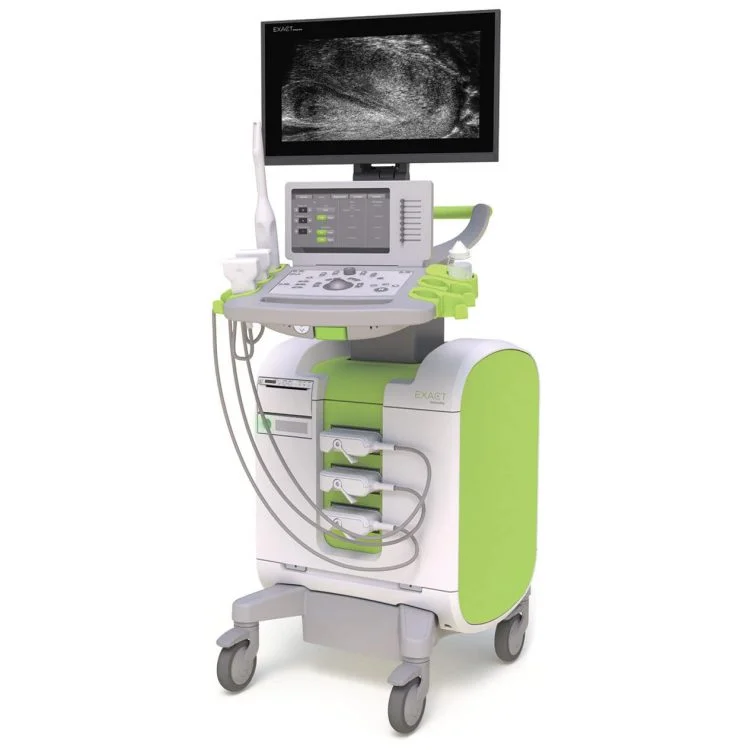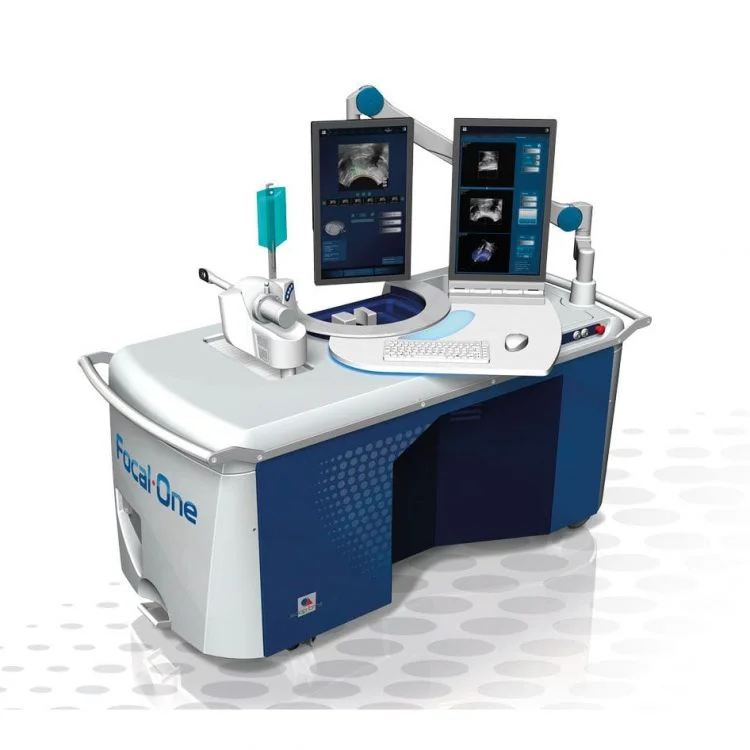Prostate cancer is the leading oncological disease among men. It often progresses without symptoms in its early stages. The prostate is a male reproductive gland that produces a fluid that helps in sperm dilution and promotes the movement of spermatozoa, which is one of the essential conditions for fertilization. Prostate cancer is a malignant process that develops in the prostate. It was once considered a disease of older men, but recent statistical data indicate a sharp increase in the number of men aged 40-50 diagnosed with prostate cancer.
Prostate cancer is a significant medical issue and is among the leading causes of death from oncological diseases in men. Despite clear progress in public health interventions and improvements in access to medical services, the high incidence and mortality rates of prostate cancer continue to remain a major challenge for the healthcare systems in Georgia and worldwide.
The mechanism of prostate cancer development is unknown, but it is important to be aware of certain risk factors:
- The likelihood of developing the disease increases with age.
- Genetic predisposition – the risk of developing prostate cancer is significantly higher in men with a family history of the disease.
Prostate Cancer Screening – Early Diagnosis
In its early stages, prostate cancer shows no symptoms, and this characteristic contributes to the high mortality rate from the disease. Given the frequency of prostate cancer cases and deaths, as well as statistically credible “younger” diagnoses, prostate cancer screening/early diagnosis has gained significant importance, especially considering that early diagnosis can lead to complete cure of the disease.
As mentioned, prostate cancer develops asymptomatically in the early stages, so its detection is only possible through comprehensive testing. Traditional screening methods for patients are associated with a lot of time, costs, and discomfort, but with the inclusion of the modern achievement of world medicine – micro-ultrasonography – this process has become much more reliable, accurate, comfortable, budget-friendly, and complete! Prostate micro-ultrasonography is now the cutting-edge method that rightfully occupies the essential standard in prostate screening and diagnosis.
Prostate Micro-Ultrasound is the latest ultrasound method for prostate screening and early diagnosis, which also performs targeted biopsy. Micro-ultrasonography has completely changed the traditional multi-stage prostate cancer screening processes. Its ExactVu Micro-Ultrasound System is specifically designed for diagnosing prostate diseases and for the precise targeting of prostate biopsies.
Micro-ultrasonography offers:

- 300% improved diagnostic quality
- 300% increased effectiveness of prostate biopsy
- 300% increased effectiveness of treatment
- Accurate identification of biopsy areas and maximum research results
- Higher accuracy in prostate cancer diagnosis than magnetic resonance imaging!
Karazanashvili Robotic Center – the only urology center in the region and surrounding area where prostate micro-ultrasonography is performed. This ultramodern method of prostate screening not only allows the avoidance of multi-stage examinations and unnecessary biopsies, but also saves the patient’s time and finances. Yes, you read that right: prostate cancer treatment in the early stages is 30 times cheaper and 95% more effective than treating advanced prostate cancer.
To better understand the difference between traditional prostate screening and micro-ultrasonic screening, let’s consider each method.
Prostate Cancer Diagnosis without Micro-Ultrasound:
- Determination of Prostate-Specific Antigen (PSA) in blood
- Digital Rectal Examination (DRE) of the prostate (manual examination via the rectum)
- Magnetic Resonance Imaging (MRI) of the prostate
- Systemic (non-targeted) biopsy of the prostate for cancer verification
Prostate Cancer Diagnosis Using Micro-Ultrasound Method:
- Determination of Prostate-Specific Antigen (PSA) in blood
Of course, determining Prostate-Specific Antigen (PSA) remains a crucial tool in prostate cancer screening and early diagnosis. However, according to the latest recommendations of the European Urology Association, the normal threshold for PSA levels has been updated. With the use of micro-ultrasound and fusion biopsy, the PSA value is considered normal if it does not exceed 2 ng/ml (previously, PSA levels from 0 to 4 ng/ml were considered normal). - Prostate Micro-Ultrasound and Simultaneous “Fusion” Biopsy (if necessary)
The 100% diagnosis of prostate cancer using “Fusion” biopsy, with simultaneous control from Magnetic Resonance Imaging (MRI) and micro-ultrasound, represents the combination of micro-ultrasound and MRI on the ExactVu platform, providing a completely new level of resolution, which ensures:- The most accurate differentiation of suspicious tissue
- The most precise visualization of suspicious regions
- The most accurate targeting of suspicious areas
- Real-time execution of targeted biopsies
Therefore, digital rectal examination, blind biopsies, and unnecessary prostate non-targeted biopsies under traditional ultrasound control are no longer required. Instead, these are replaced with “Fusion” biopsies, controlled simultaneously by MRI and micro-ultrasound. This not only saves time and financial resources but also ensures a 300% increase in visualization, nearly 100% identification of suspicious areas, and a significant reduction in unnecessary and inaccurate biopsies.
Prostate “Fusion” biopsy with simultaneous MRI and micro-ultrasound control guarantees the most accurate diagnosis. It detects prostate cancer at such an early stage when it is completely asymptomatic. The “Fusion” biopsy has increased prostate cancer detection by 100%, which is a critical factor in reducing the spread and mortality of the disease.
Prostate Cancer Screening at Karazanashvili Robotic Center:
At the Urological Hub of Professor Guram Karazanashvili, prostate cancer screening is conducted using this cutting-edge methodology instead of the traditional multi-stage, high-cost examinations. Through the use of micro-ultrasound examination during prostate cancer screening at our clinic, we identify asymptomatic individuals who have pre-cancerous conditions or early-stage prostate cancer, which plays a crucial role in starting early treatment, thereby reducing morbidity and mortality.
Non-Surgical Robotic Treatment of Prostate Cancer:
It is well known that accurate diagnosis is the foundation of effective treatment for oncological diseases. This is especially important for prostate cancer, as modern technology enables thorough examination of the prostate and precise diagnosis. Timely diagnosed prostate cancer can be cured in almost 100% of cases. Not only is it cured, but patients can also maintain normal sexual function and urinary control.
A revolutionary breakthrough in prostate cancer treatment is robotic ultrasound therapy “Ruth,” which eliminates localized prostate cancer without surgery, in just one day.
FocaL One Ruth is an advanced, non-invasive, radiation-free robotic method for treating prostate cancer. It is also known as focal therapy. FocaL One Ruth uses high-intensity focused ultrasound (HIFU) to safely and effectively destroy damaged prostate tissue while leaving healthy tissue untouched.
Advantages of Prostate Cancer Treatment with FocaL One Ruth (Robotic Ultrasound Therapy):

- No incision needed (non-invasive)
- No associated surgical risks
- Prostate is preserved
- Sexual function is preserved
- Urinary control is preserved
- Minimal hospitalization
- No radiation exposure
- Precise targeting of the affected tissue
- Healthy tissue remains undamaged
As mentioned, Ruth can be used for localized cancer or early-stage cancer, or in the case of cancer recurrence (cancer returning). For advanced (metastatic) cancer, it is not applicable, highlighting the importance of prostate cancer screening and early diagnosis.
Since robotic ultrasound therapy only destroys the parts of the prostate affected by cancer, it eliminates cancer in any region while leaving healthy tissue intact. This minimizes the risk of disease progression, results in fewer side effects, and improves the quality of life compared to radical treatments (radical prostatectomy or radiation therapy). This is particularly evident when it comes to normal sexual life and urinary control.
Karazanashvili Robotic Center did not break tradition and, for New Year, made another gift to cancer patients—introducing non-surgical, robotic ultrasound therapy for prostate cancer treatment for the first time in Georgia and the region, at Professor Guram Karazanashvili’s Urological Hub.
Thanks to FocaL One Ruth, the pathway for prostate cancer patients from diagnosis to non-surgical treatment at Karazanashvili Robotic Center becomes much more effective and budget-friendly:
Once the patient’s prostate-specific antigen (PSA) level is determined, prostate micro-ultrasound and “Fusion” biopsy (prostate micro-ultrasound examination) are performed. “Fusion” biopsy, with simultaneous control from magnetic resonance imaging (MRI) and micro-ultrasound, provides an accurate diagnosis, detailed prostate images, and shows the location, structure, and progression of cancer. After the precise diagnosis, prostate cancer is eliminated in just one day, without surgery or any surgical intervention, through the robotic method. Patients maintain their quality of life alongside life itself, as the prostate is a key guarantee for normal sexual and urinary function.
Karazanashvili Robotic Center is an advanced, high-tech urological hub, based on Professor Guram Karazanashvili’s Western education and experience, equipped with the latest state-of-the-art equipment, and rightfully holds a leading position not only in Georgia and the region but also globally.







